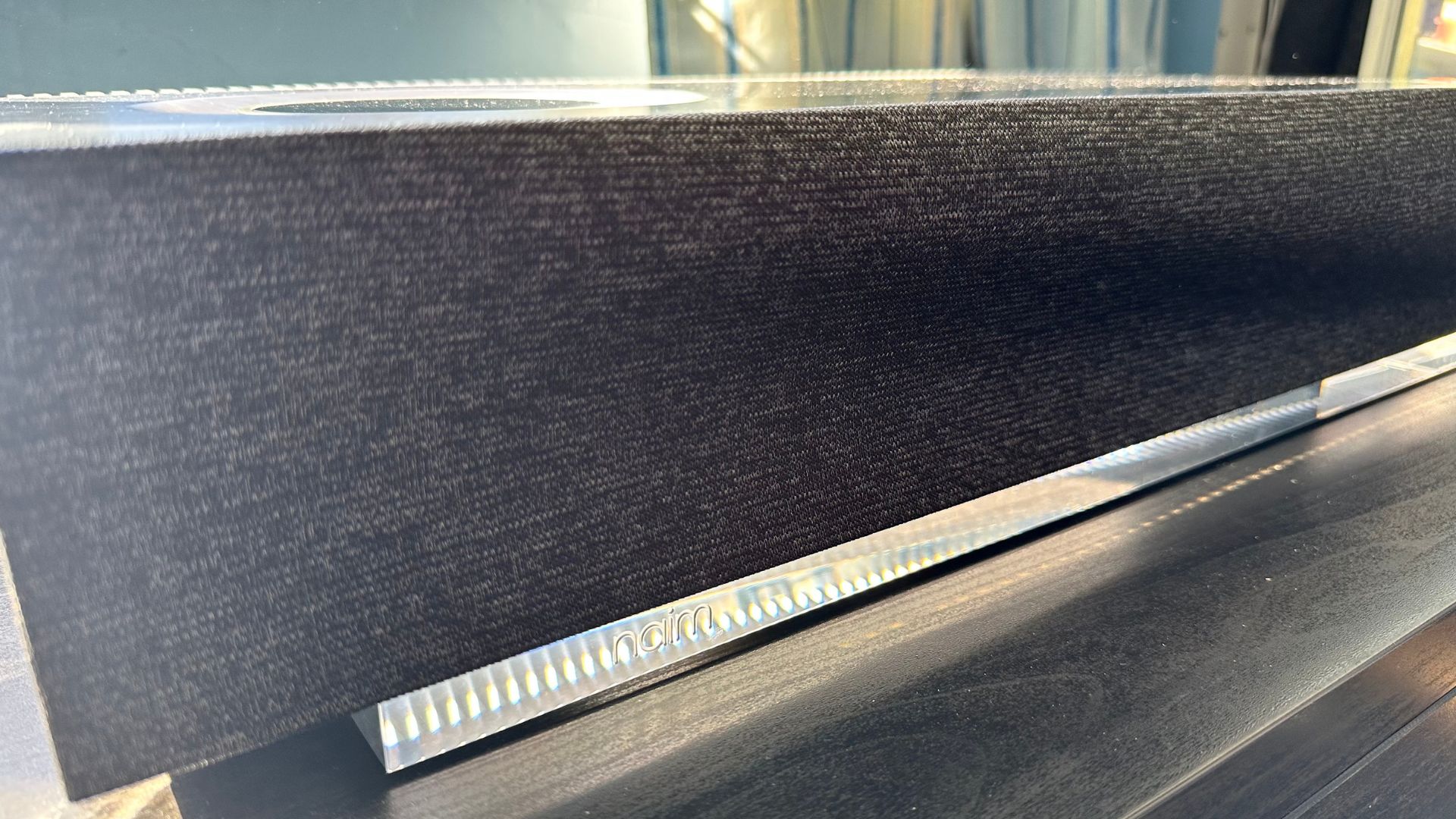
You may not have heard of Naim, unless you’re really into the sound systems in top-of-the-range Bentleys, or you’re a cash-strapped audiophile who looks on with jealousy at its range of hi-fi separates and all-in-one systems.
Naim makes some of the best home audio gear north of a thousand bucks, and the Mu-So is just one of its many expensive, high-end audio devices.
The Mu-So 2nd generation isn’t (quite) at the bottom rung of the Naim lineup, but it’s been out since 2019, so you can’t expect some of the latest features. You can expect all the features you need, though, to go with its sublime audio performance, as well as that unreasonably attractive design that still looks fantastic – even eight years after the first model's release.
Naim Mu-So 2nd generation: Price and availability
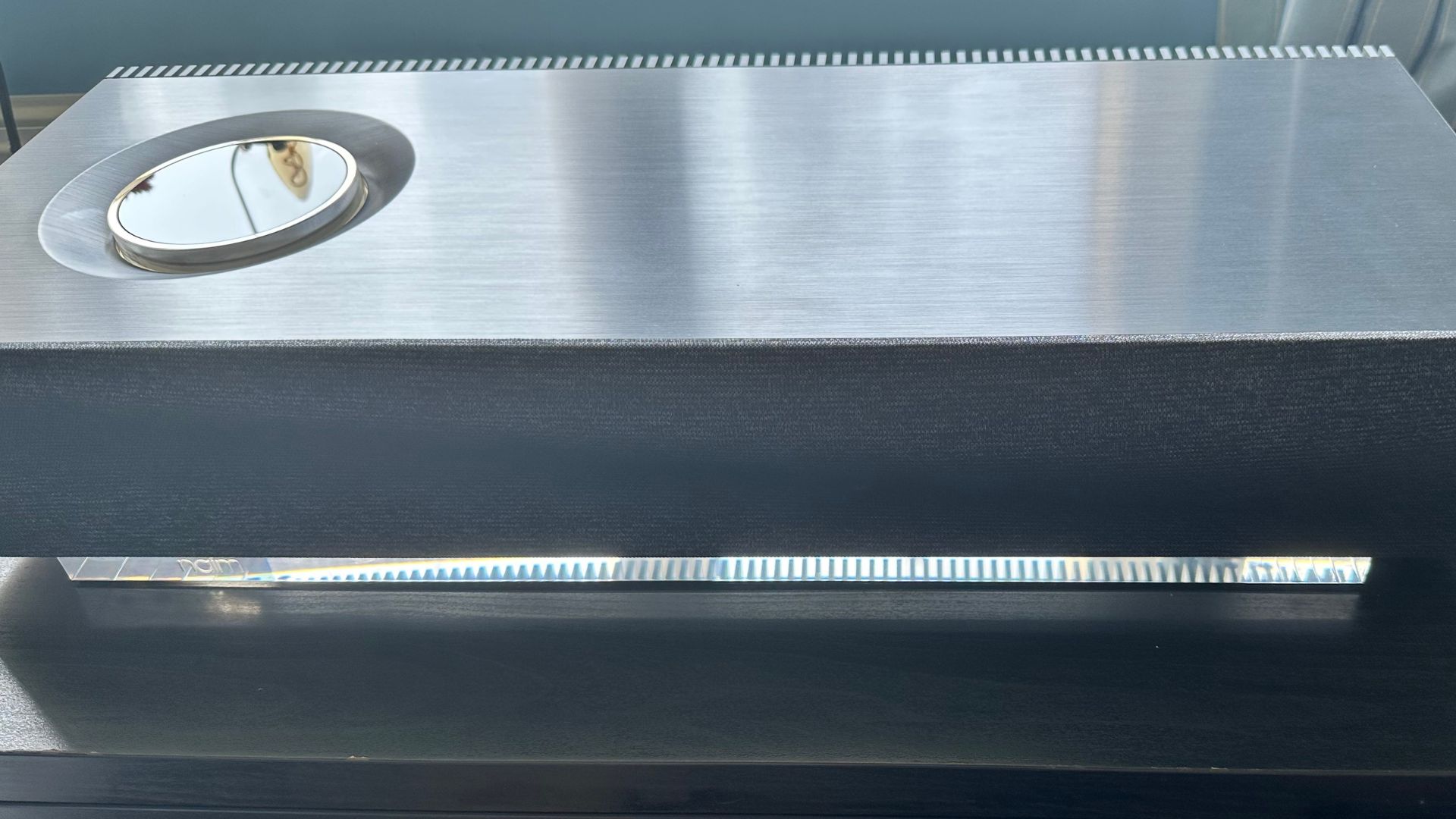
Let’s get this out of the way first – the Naim Mu-So second generation is not cheap. Like, at all. It costs $1599/£1149 when you buy it new. For the price you’ll pay in the US, you could get (and I’ve run the maths) five HomePod 2s, a HomePod mini on top of that, and then enough change for one person to go for dinner at Olive Garden. That’s … a lot.
But if you’re looking for the best sound in a wireless speaker, you’re really going to struggle to find it anywhere else. You won’t struggle to find one in stock either, as you can grab one from some easily accessed big box retailers along with dedicated hi-fi stores – B&H Photo stocks the speaker for example.
Naim Mu-So 2nd generation: What I like
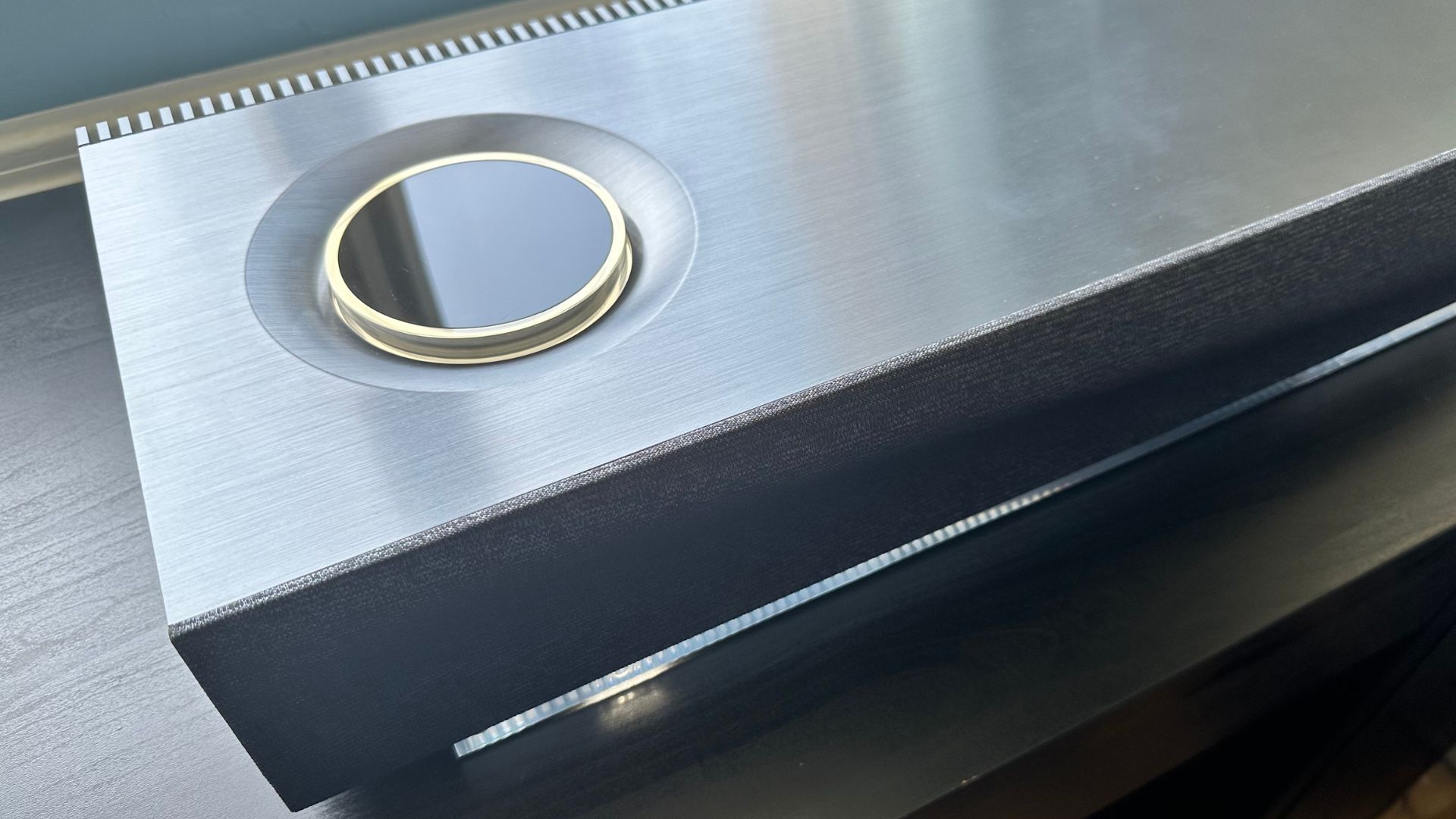
To make the high, $1600 price make sense, you have to reconsider what the device is for. This can be part of a multiroom setup, but it’s not supposed to go up against the HomePod 2. Or even other similar specced and priced smart speakers for that matter – this is an all-in-one hi-fi separates replacement, for those that want incredible sound and would usually spend more on having dedicated items for each specific part of a dedicated music listening system; and, perhaps more importantly for them, one that will match up with the home decoration.
When you think about the Mu-So in this way, it makes more sense – and my god is that price easily justified when you look at and touch the thing. It’s a box, yes, but Naim has made sure that it’s almost like a sculptural centerpiece to a room. The main body of the unit is a wooden (like most speakers) construction that's then been smothered with stainless steel, giving it a super classy vibe. The front of the device, where the drivers, tweeters, and subs live, is covered with this wave pattern cloth cover that shimmers in the correct light with a kind of glitter interwoven into its fabric. It looks incredible, for lack of a better word, stunning in its simplicity.
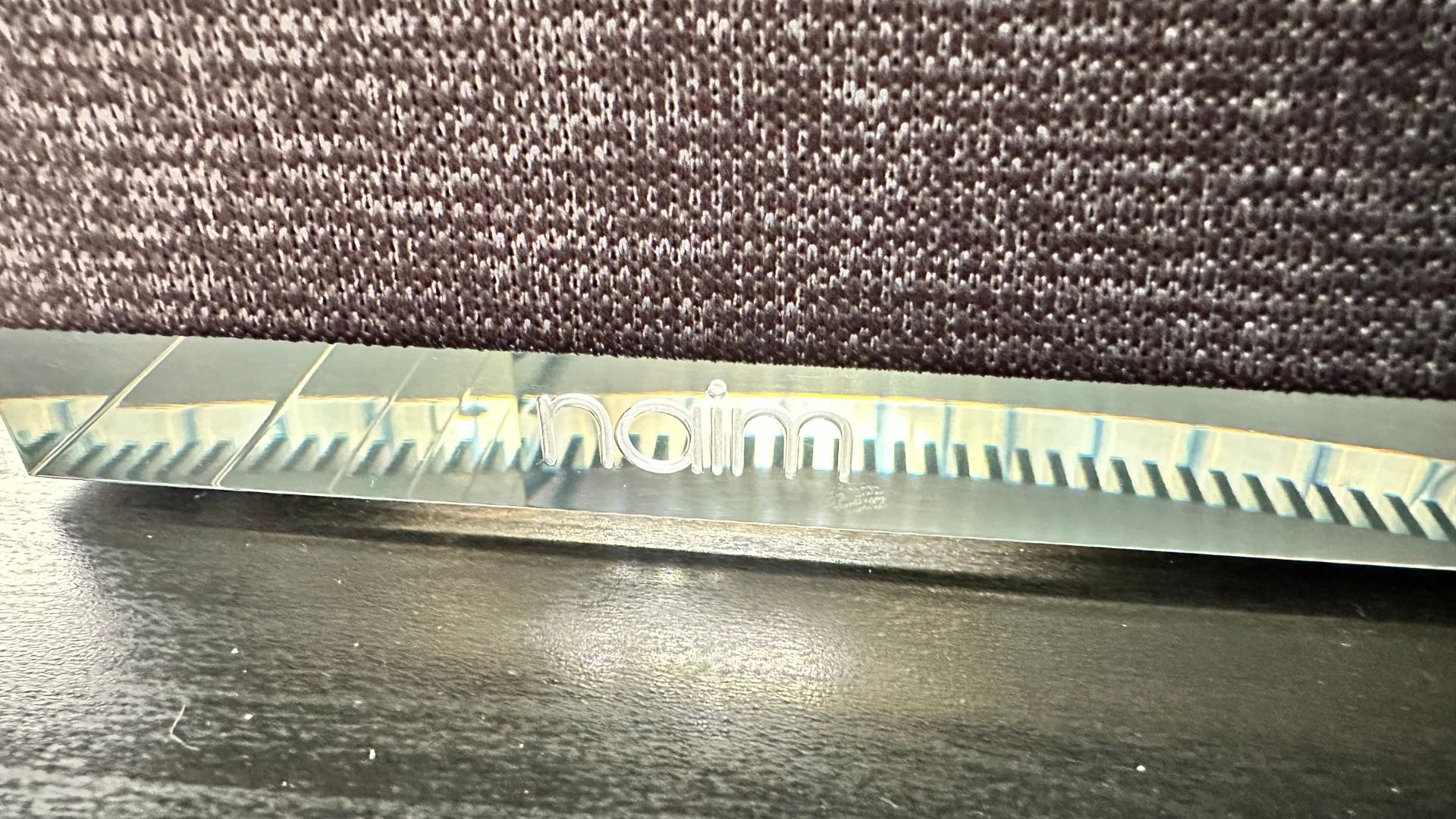
The whole box sits on this massive glass slab that diffuses some white LEDs at the back edge, which makes the whole thing look like it's floating. There’s even a tiny Naim logo engraved into the front of the glass to the left that's lit up with its own LED lights. *chefs kiss*.
Adding to the class is the lovely control dial on the top – it’s a round affair, and it lights up subtly but brightly around the edge to display the volume. That wonderfully diffused light-up section is actually the volume dial – and it’s a joy. It spins around the central control section smoothly and effortlessly and feels great under the fingers.
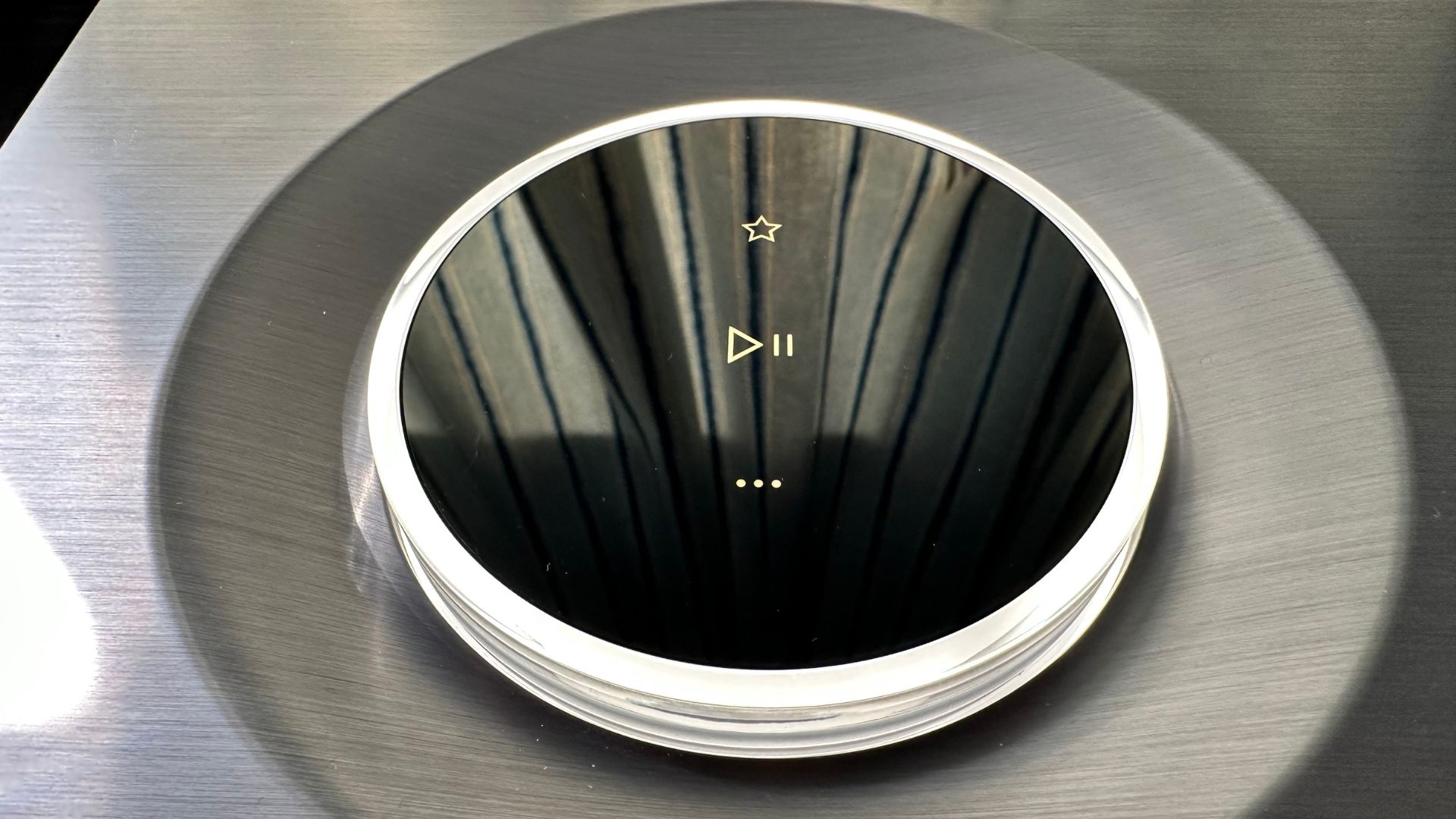
The central control section features touch-sensitive buttons that light up when your finger gets close (which will always remain magic, no matter how many other devices do it), and they’re all clear and easy to use. You can play/pause, skip backward and forwards with the main controls, and then there are controls underneath that let you select the sound input – including the HDMI mode.
Because of course, you can use this thing as a soundbar. There’s an HDMI port on the bottom of the speaker that supports eARC, so you can hook it up to a TV and get all the sound pumped through. Bear in mind that there’s no way to hook up a sub, so you won’t get that earth-shattering boom in action movies as you might with a separate subwoofer, but for everything else, it's a great bonus feature.
Connectivity is pretty good all around. There’s AirPlay to transfer music from an Apple device, Bluetooth for those devices that don’t support the latter, Chromecast for Android users, and then a couple of physical ports on the bottom for those that like to hook things up via headphone jack line-ins. That’s a pretty good selection, and all work a charm.
The app is the best way to interact with the speaker, I’ve found. It’s a solid, attractive, and easy-to-use piece of software that lets you log in to all your favorite streaming services and search their libraries together to find something to listen to. It works almost instantly in transferring the music across, and I’ve had no problems with connection over my time with the device. Which is good – because I’ve used it a lot.
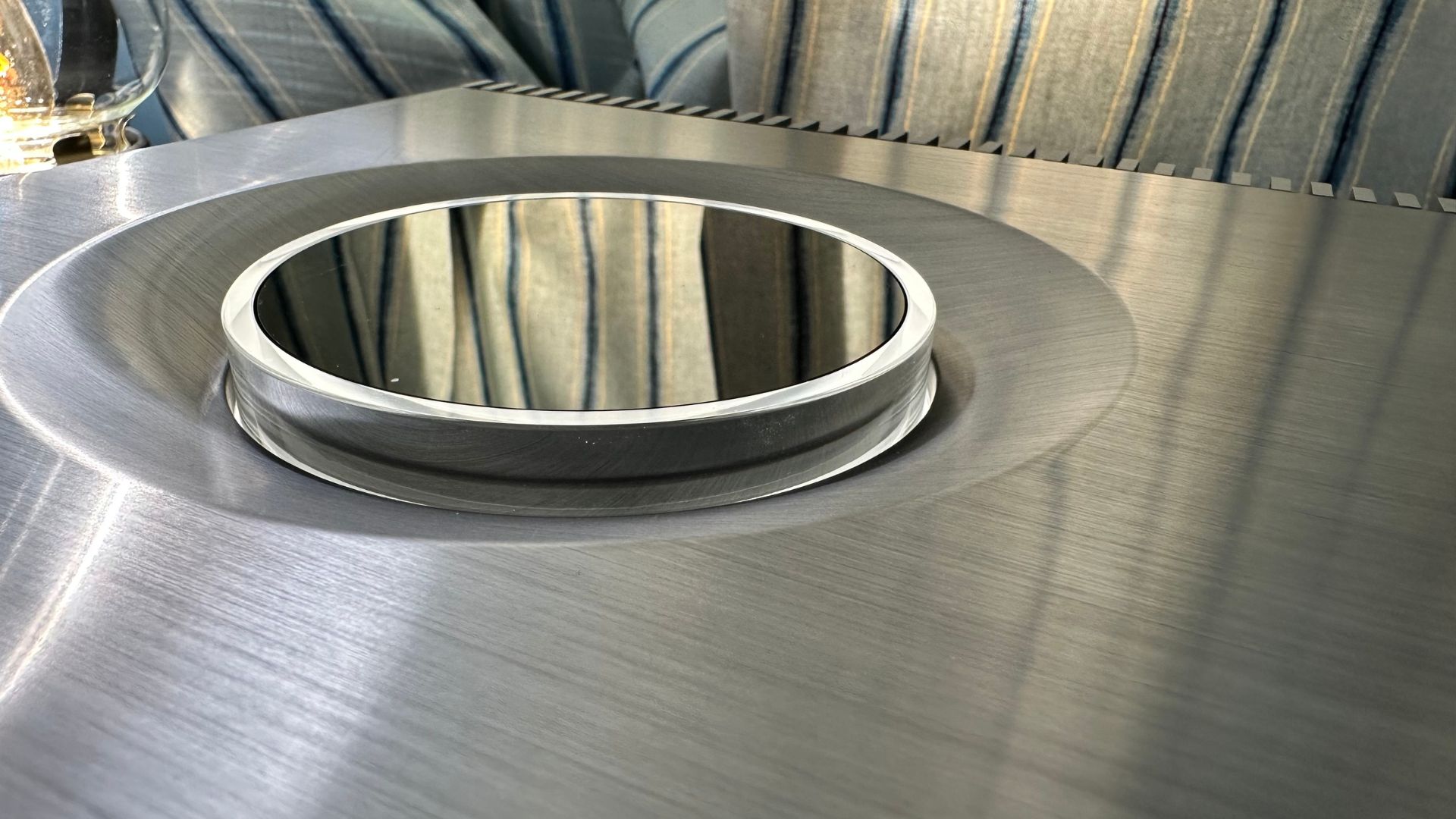
I like my hi-fi separates system, and I think it sounds pretty good. It doesn’t, however, hold a candle to the sound that the Mu-So can pump out. It’s no surprise, to be honest. The Naim Mu-So is built on years of Naim's research into excellent sound equipment, with some wicked internals – there’s no way my paltry 200W system could even make a dent in the 450W output of the Mu-So.
There’s more to it than the size of the number and the Watts on board – there’s a delightful sound signature to the stainless steel behemoth. It’s intonated perfectly, articulate, and detailed like nothing most people have ever heard. But then the mids are wide and fat, with nothing missing and, importantly, nothing too overpowering. The bass is dynamic, powerful, and perfectly balanced – an audiophile with tens of thousands of dollars of machinery could nitpick, but this is the point of audio where the more you spend becomes harder and harder to justify. If you want excellent sound, you needn’t really go beyond the Naim Mu-So.
An audiophile with tens of thousands of dollars of machinery could nitpick, but this is the point of audio where the more you spend becomes harder and harder to justify.
Getting some of my favorite tracks playing was something of a joy. Devin Townsend’s Heartbreaker layers perfectly, each individual part of the track given just the right amount of breathing space. Devin is in the room, playing with his backing band – just for you. Each pick of a guitar string picked out in pinpoint detail, each swell of the synth strings impactful and massive. There’s true stereo here as well, and it remains more magical than Spatial Audio could ever pull off. There’s a surprising lack of directionality – it still sounds amazing no matter where you are in the room. It’s remarkable.
For something a little more delicate, Synergy’s Legacy is a smooth synth track that shows the depth of the bass – and baby, it goes all. The. Way. Down. There’s a great sub-bass presence and plenty of mid and low-bass kick. The track is wide and spacious with plenty of room for those ’70s string hits to work together – it’s a fantastic experience.
Naim Mu-So 2nd generation: What I didn’t like
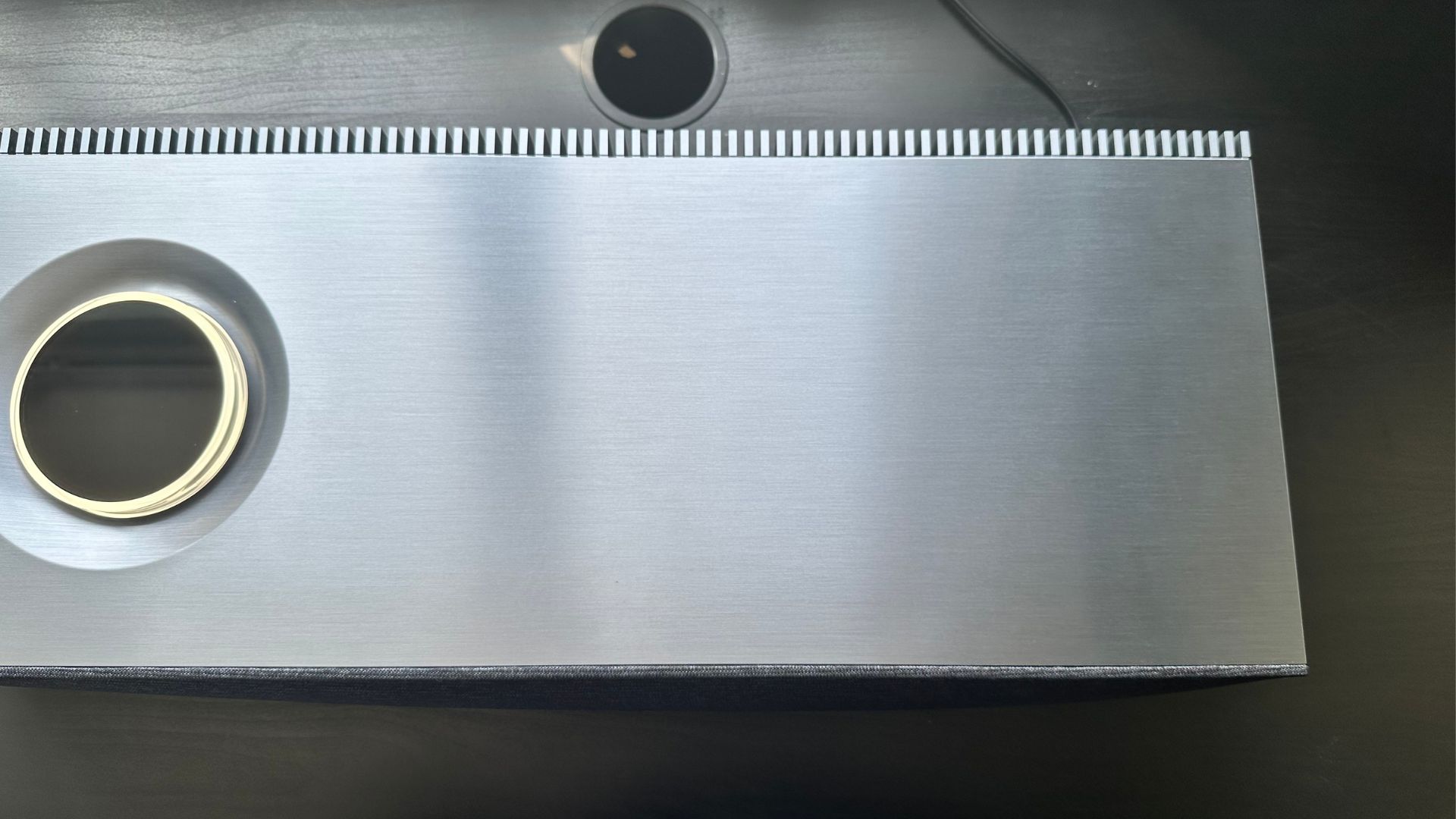
So while that price is easy to justify so far, it’s very difficult to ignore. The elephant in the room,is that the $1000+ price-tag refuses to leave you alone. Let's put it like this. If you’re in the market for a speaker that sounds brilliant, looks great, and you’re not bothered about the price, then this is the speaker to go for.
If you find that price a little difficult to swallow but you can still stretch to it, you won’t regret it. Can’t afford the $1600? There are loads of excellent options in your price range. It really is as simple as that. The price isn’t so much a ‘negative’ as an ‘unfortunate but apparently necessary barrier to entry.’
The price isn’t so much a ‘negative’ as an ‘unfortunate but apparently necessary barrier to entry.’
The other two things are incredibly minor. The area where the power lead plugs in is perhaps one of the most inaccessible ports you’ll find this side of Mercury, and plugging the figure-8 lead in was a pain. Once it’s in, it's in and you needn’t unplug for any reason, but getting it there sucks.
Finally, is the controller. It’s fine. It’s well laid out, easy to use, and works well. It looks like a miniature version of the Mu-So itself when viewed from the bottom, but it feels a little too cheap to have come with something that cost $1599. Given you’ll be spending most of your time in the app it’s no great burden, but if you’re given a remote it's nice when it feels a little more premium.
Naim Mu-So 2nd generation: Competition
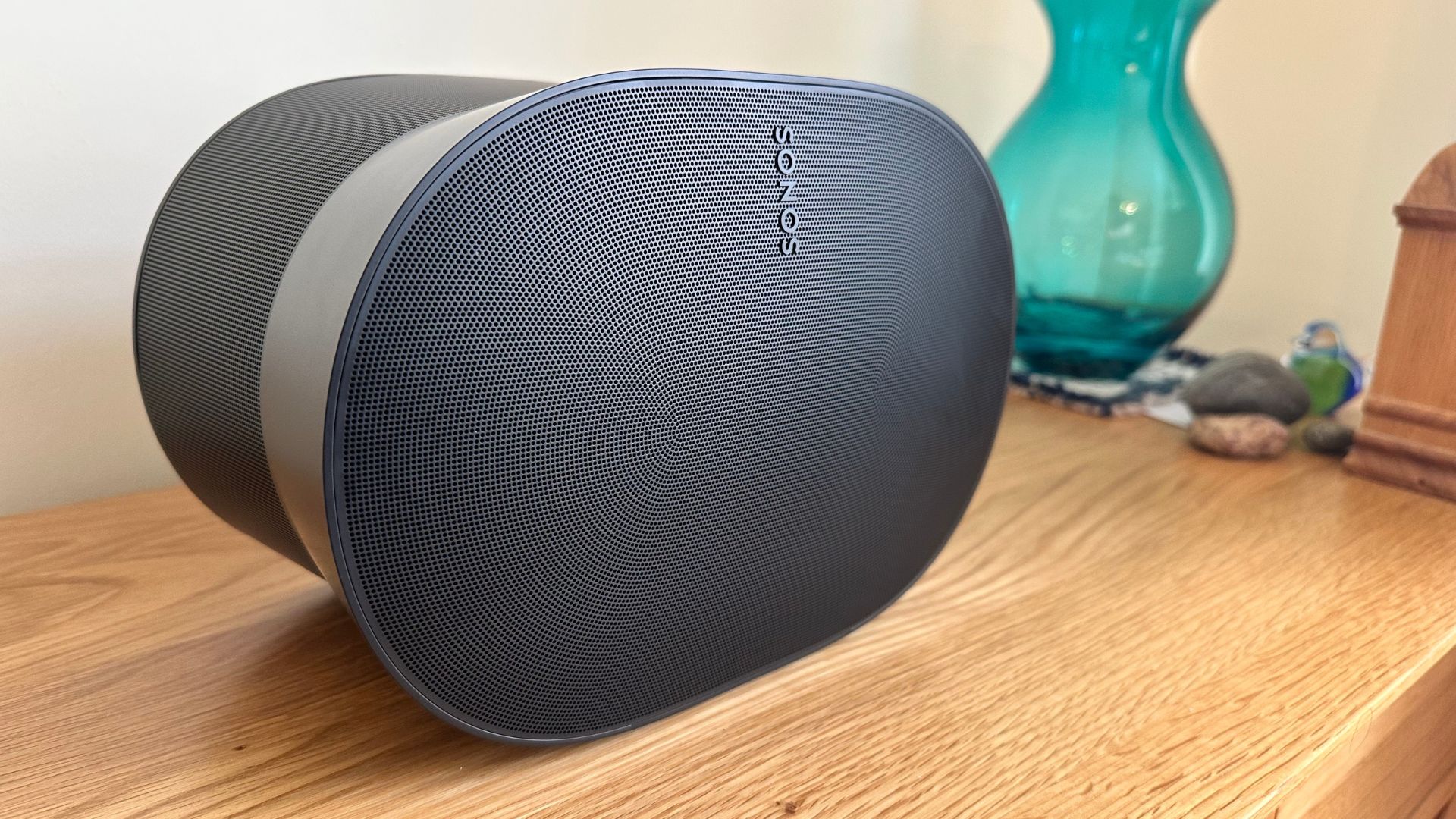
There really isn’t anything that competes with the Naim Mu-So in its price bracket, but if you’re looking to spend less, then there are some options. There’s the HomePod 2, which doesn’t sound even come close to as good, or the Sonos Era 300, which again is less than a third of the price, but doesn’t touch the sonic capability of the Naim. It’s not even a tricky one to argue – this is the best, but you’ll pay a lot to get it.
Naim Mu-So 2nd generation: Should you buy it?
You should buy this if…
- You need something that’s going to blend in with your modern decor
- You’re absolutely dedicated to finding the best-sounding all-in-one
- You’re a big fan of super intuitive on-device controls
You shouldn’t buy this if…
- You don’t want to spend over $1000 on sound equipment
- You like fancy remote controls, and don’t want to use the app
Naim Mu-So 2nd generation: Verdict
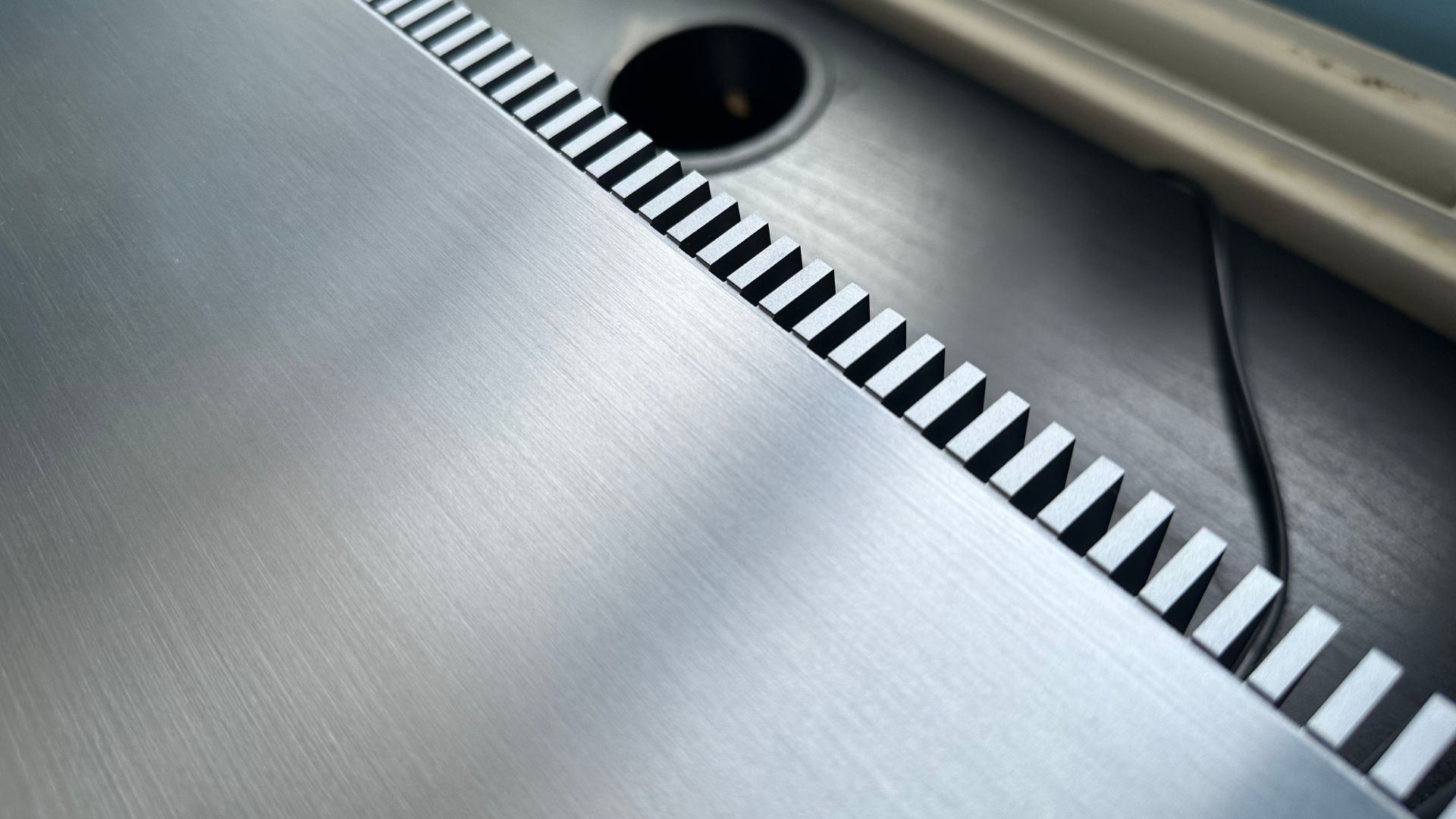
The Naim Mu-So is undeniably the best all-in-one wireless speaker unit out there. It may not be as smart as other options with no voice control, but it more than makes up for it with sumptuous sound – and easily justifies its high price with a premium build, impeccable on-device controls, and a very easy-to-use, and functional app.
Is it the newest? No. But it is still the best.
You’re simply the best
Expensive? Yes. Worth it? Also yes. The Naim Mu-So is without a doubt the best wireless speaker under $2000, looking and sounding the part. If you can afford it, you will love it.







